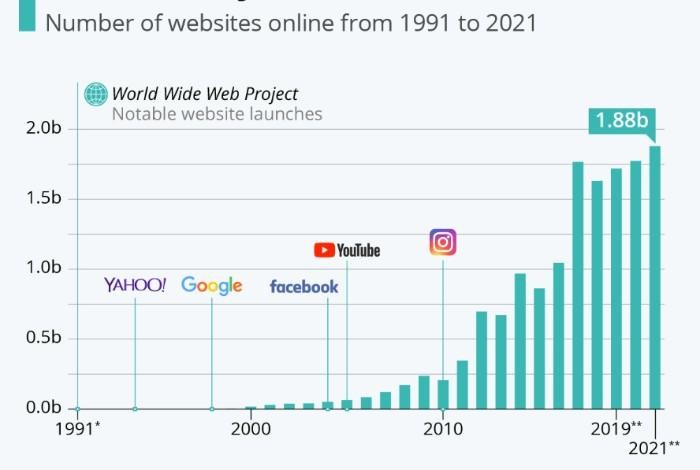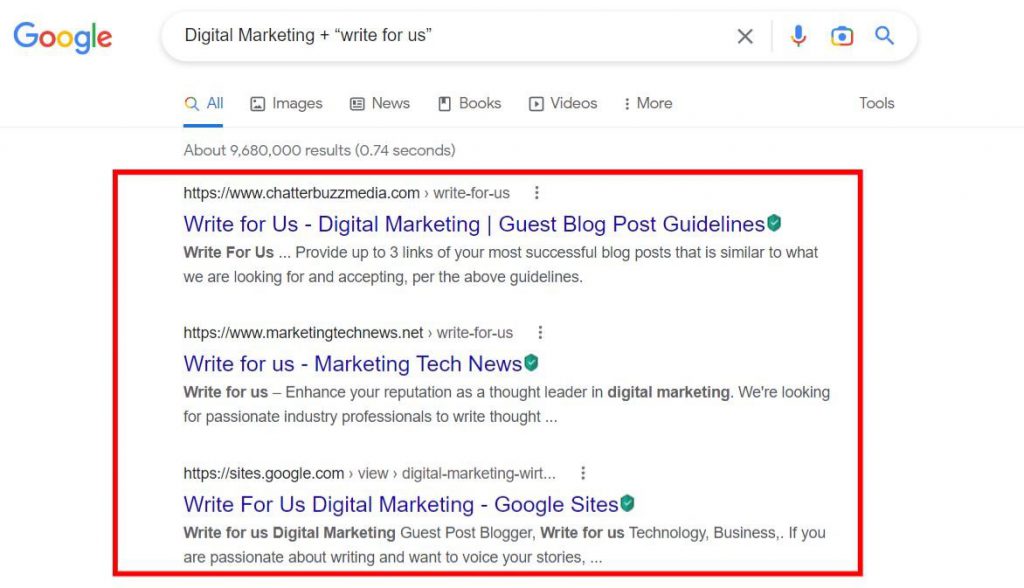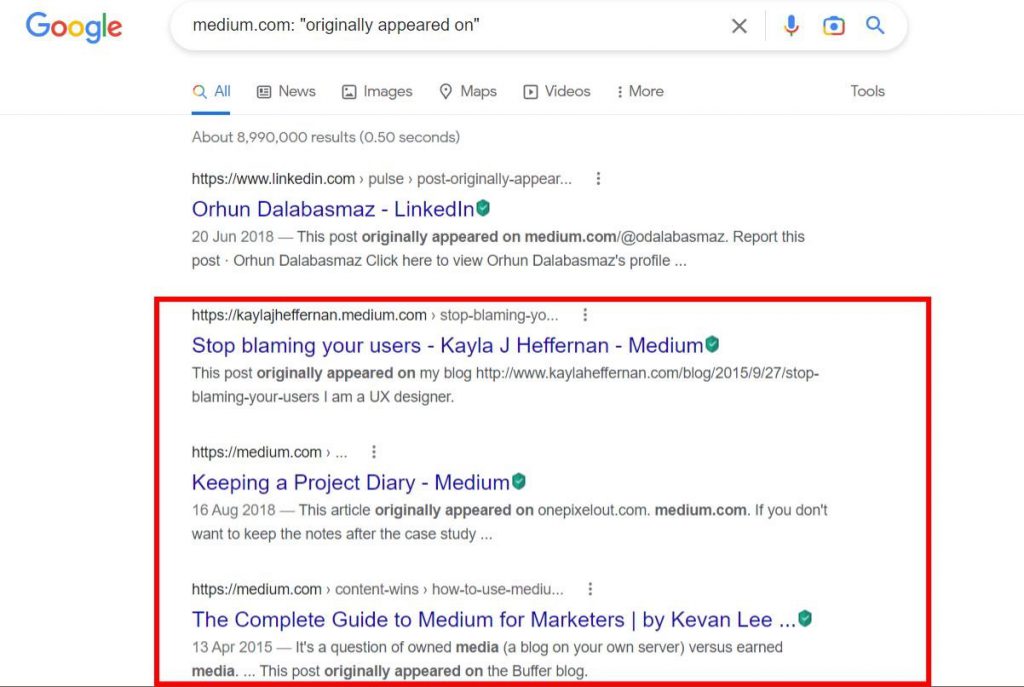What is Content Syndication? 7 Tips to Guarantee Success
What is content syndication? Well, this is a question that almost every marketer wants to know.
Why?
Because content syndication is a powerful tool that can help you:
- Increase your website traffic
- Amplify your reach
- Get quality leads
- Increase your sales
And, of course, this is a big deal for any marketer who wants to stand out from the crowd and get their content noticed.
By far, standing out from the crowd is one of the most challenging tasks in content marketing.
If you’ve put a great deal of time, effort, and research into making your blog pieces a success but aren’t realizing any return on investment (ROI), then it’s time to consider content syndication.
But what is content syndication? What are its benefits? How do you find high-quality content to syndicate? How do you create a successful content syndication strategy?
In this article, we’ll answer all these questions and more to help you create a successful content syndication strategy for your business.
Let’s get started.

What is Content Syndication?
Content syndication is the process of republishing your content on third-party sites that have a wider reach than your own website or blog.
In other words, it’s when you give other websites permission to publish your original content on their site.
For example, Red Website Design first published a story on how to boost e-commerce sales.

Later on, Social Media Today republished the same article.

This, in a nutshell, is what content syndication is.
And in this case, Social Media Today was the third-party website that the original publisher sought to boost the visibility of the article.
How do you know that the content was syndicated? Easy, publications mark the content with lines such as:
“This article was originally published in [name of publication with link].”
or
A version of this post was first published on [name of the original publication and link].
After republishing the article, Social Media Today added a note at the end of the article, as shown below:
Now, what you need to keep in mind about this content marketing strategy is that you must choose the third-party website carefully. Look at:
- Their reach
- Their position in the industry
- What value you stand to get
This is the only way to tap into audience bases that are ready to make a purchase. It’s also an effective strategy in terms of boosting customer engagement.
If you’re worried that the strategy will lead to content duplication and, in turn, hurt your SEO, you can put your worries to rest.
Google knows that sometimes the same content gets published on multiple websites for reasons like content syndication.
This tactic doesn’t violate Google policies. But even though Google does not penalize sites for replication, they still prefer original content.
Therefore, when syndicating content, it’s a good idea to make small changes, such as using a new headline or image. You can also:
- Post only the headline
- Edit the original work and have it republished
- Post an excerpt from the original content
By doing this, you minimize the risk of duplication while retaining the SEO value of your content.
Pro Tip: You can syndicate any kind of content, including blog posts, podcasts, videos, reviews, articles, and more.

Now it’s time to discover the other 102 steps that will get more organic traffic flowing to your website. Get the SEO Checklist here.
Want to get a sneak peek of what it looks like?
Enter your email and get a free demo version of the SEO Checklist.
How is Content Syndication Different from Guest Posts?
Custom image
Content syndication is often confused with guest posting. But there is a big difference between the two.
While content syndication is simply republishing your content on other domains, guest blogging involves creating original content and publishing it on other websites.
Although the two are proven growth marketing strategies, content syndication has the edge over guest posting. It doesn’t require time and effort to create new content to publish on other websites.
Another beauty of content syndication is that it’s scalable, unlike guest posting. Republishing your blog posts on other websites allows you to leverage the same content multiple times.
On the other hand, the perks of scalability are limited in guest posting. Well, unless the domain where your guest post appears has a robust list of other websites that offer content syndication.
Once you write a guest blog post for a specific website in your niche, the article will remain only on that site. As a result, your goal of getting new leads or traffic would be limited to the reader base of that particular site.
The bottom line?
Content syndication provides better chances of generating quality leads with every post than guest posting.
After all, how many guest blog posts can you create in a month?
What Are the Benefits of Content Syndication?
Let’s get into the nitty-gritty of content syndication and see what this growth marketing strategy can do for your business.
Custom image
1. Helps Increase Brand Reach
The main goal of content syndication is to give your content more exposure.
SEO strategies alone can’t give you the exposure you need to boost your website traffic. This is because there is high competition owing to the number of websites existing today.
Have a look at the image below:

There are over 1.8 billion websites existing today. Due to this high competition, relying on a few marketing strategies will hardly generate enough leads.
Thankfully, you can use syndicate blog posts as a content strategy to widen your reach.
The idea is to republish your blog post or article on a website with a broader reach than yours.
Doing this exposes your content to a new audience, which increases the likelihood of getting more website visitors.
The increased traffic boosts your leads, which eventually helps you close more sales and grow your business.
2. It’s a Cost-Effective Way to Promote Your Business
Content syndication is one of the most cost-effective ways to market your business online.
The best part? You don’t have to spend a lot of money on creating new content.
All you need to do is come up with high-quality, original content and have it republished by websites that offer content syndication or pitch it to other websites with a wider reach.
Yours is to conduct a follow-up process and track their performance.
Even automated content syndication will continue feeding your pipeline and generating leads that keep your sales consistent.
You only need to spend money when looking for paid opportunities to publish your content on popular sites.
Keep in mind, however, that you can only gain more exposure if your content is of excellent quality.
Good content will generate clicks, which drives engagement and creates valuable insights about consumers’ preferences. You can then use this information to target new audiences and demographics.
3. Receive Quality Backlinks
Content syndication exposes your business to new websites, which is an opportunity for a robust link-building strategy – especially backlinks.
A backlink is a link that points from one website to another.
The number of backlinks that point to your website is a contributing factor to your SEO ranking. Google considers it a vote of confidence in the quality of your website.
The better the quality of websites that link to yours, the higher Google will rank your website in SERPs.
The best way to make the most of quality backlinks through content syndication is to link your brand in every story you want to be republished. Branded links are easy to acquire because they’re the most organic.
Unfortunately, some third-party websites might remove your links as they repost your blog posts, limiting your chances of improving your link profile.
But if you’re sourcing for opportunities through content syndication platforms, you can negotiate your terms to include a backlink.
4. Establishes Your Brand As a Thought Leader
Thought leaders are respected for their in-depth knowledge and experience in a particular industry.
When you syndicate your content, you increase your reach and gain more authority in your industry.
The increased authority and reach will eventually establish you as a thought leader.
But to achieve this, the content you want to be syndicated should be of excellent quality and address a particular pain point. People always seek valuable content to help them solve their problems.
So, if you want to be a thought leader, be a source of solutions.
If you produce such content and have it syndicated on popular websites, you’re likely to establish your place as an authoritative voice in your industry.
5. Increased traffic
One of the most significant benefits of content syndication is the increased traffic it drives to your website.
When your content is published on other websites, you expose it to new audience segments that might not be aware of your brand.
Some of these people might find your content valuable and visit your website for more information.
And if you’ve done an excellent job branding your website and content, these visitors are likely to become leads and customers.
6. Fills Your Sales Pipeline with Quality Leads
As we’ve established, content syndication exposes your business to new people and helps you generate quality leads.
These are people who have read your content and found it valuable enough to visit your website.
Usually, if the content on your website is a customer’s first interaction with your business, this might not lead to conversion.
Annoying, isn’t it?
Well, you can’t blame them. They don’t know you or your business enough to make a purchasing decision.
On the other hand, if an authoritative website publishes your content, there’s a higher chance that the people who read it will visit your website.
Some might even sign up for your email list or download an offer in exchange for their contact information.
These leads can then be contacted and nurtured through the sales process until they’re ready to buy.
7. Generates Real Engagement
Content syndication is an excellent way to forge long-lasting relationships with customers.
When you syndicate your content, you’re opening up new channels for engagement.
You generate real engagement with potential customers who might not be familiar with your brand.
People who read your content on these websites might share it with their friends and followers, leading to even more engagement.
And if an authoritative website syndicates you, this could lead to some serious engagement from influencers in your industry.
How to Create a Successful Syndication Strategy
Now that we’ve established the benefits of content syndication, let’s look at a few things you can do to ensure that your content syndication efforts are successful.
1. Create High-Quality Content
If you want your content to be syndicated, it needs to be remarkable. This is the first step to getting the most out of content syndication.
Your content must be valuable, original, and well-written.
It must also be relevant to your target audience and offer something new, as summarized below:

Here’s a complete guide on how to write quality content for your blog. Follow the steps outlined in the guide, and you’ll stand a better chance of getting syndicated by popular websites.
2. Guest Post on Quality Websites
If your site is relatively new, it’ll be hard to launch content syndication immediately. Big blogs might not be interested in what you’re offering.
Unless you’re an authority in your industry, content syndication will need a lot of time and effort.
So, what’s the workaround? Guest posting.
It’ll give you a headstart and help establish you as a great writer.
You can look for blogs in your niche that accept guest posts by researching keywords and pairing them with search strings such as:
- Guest posts
- Contribute to our website
- Write for us
- Guest posts wanted
- Writers wanted
For example, if you wanted to write an article in the digital marketing niche, search for the key phrase:
Digital Marketing + “write for us”
This will give you a list of the top blogs accepting guest posts, as shown below:

Guest posting on reputable platforms will help you create a portfolio of hard-to-resist samples that content syndication demands.
3. Choose the Right Content Syndication Partners
There are lots of websites open to content syndication.
But this doesn’t mean they’re always a good fit. And the fact that you want blogs with quality standards, it might be a bit challenging to find the right one to work with.
Worse, the readily available sites primarily provide content syndication on marketing.
Not to worry, though. You can still have them publish your posts if you tweak them to match what they offer.
For example, if you are a fast-food restaurant, you can post a blog on leveraging social media to drive sales.
If you are a real estate agent, craft a quality blog on the best lead-generation techniques for realtors.
The general idea is to match your post to the content the third-party blog offers.
While looking for content syndication partners, always consider websites that:
- Offer better or similar authority than your website
- Has a readership that matches your buyer persona
- Have canonical links to original posts (we’ll look at this in detail)
Stay away from new websites, those that have low authority, spammy outbound links, or those with no clear editorial policies. This might harm your SEO.
4. Reach Out to the Identified Content Syndication Partners
Before pitching the idea to a chosen website, check if they usually republish content.
How do you do this?
Easy. Visit your target blog, go through a few posts and check if there are any markers for content syndication – we’d mentioned this while answering the question, “What is content syndication.”
Alternatively, you can use Google to make the search easy.
Enter the domain name and add the content syndication search string.
An example you can look for is medium.com: “originally appeared on”
Here’s a screenshot of the search:

From the image, you can confirm that Medium provides content syndication, as the results show content originally published elsewhere.
You can do the same for a target website you desire. And once you confirm that they offer content syndication, pitch and submit a few of your high-quality blog pieces.
You can always find the website’s contact information on the “Contact Us” menu. Reach out to them via email with your proposition.
5. Proof Your Content for SEO
It is not uncommon for content syndication to create duplicate blog pieces. And although it doesn’t violate Google policies, it’s best to make a few adjustments to your article before submitting it.
According to Google, if you syndicate your content on other domains, its search engine will always show the version they deem relevant to a user’s specific search. This may or may not be your original version.
So, what do you do to prevent third-party websites from outranking you on search engines?
There are two ways you can do that:
Rel-canonical Tag
The “rel-canonical” tag is used to link Google to the original content.
If your content syndication partner adds this tag to your republished articles, they simply tell Google where to find the original content.
This helps Google decide which version to show in instances of duplicate content. Here is an image by Moz showing a rel-canonical link in action:

The rel-canonical tag will attribute you as the original author and allow you to enjoy all the links that the third-party website attracts.
As great as this sounds, remember that Google algorithms change from time to time. So, use web content syndication with care.
NoIndex Tag
If a blog piece or article, or web page is tagged as “NoIndex”, search engines won’t crawl it. In other words, it’s not indexed and won’t show up on search engine results.
You can reach out to partner sites and ask them if they’re willing to use the “NoIndex” tag. This will essentially remove the syndicated copy from the search results.
Between the two methods, always give the rel-canonical tag a preference. Google is quite effective at interpreting it.
If the third-party sites say no to both methods, you can ask for clear attribution and a backlink to your website.
Pro Tip: Always wait for at least a week after publishing your article before submitting it to be republished. This will allow Google to index your original post and help you rank first.
6. Track the Performance of Your Content
When republishing content, always track and measure the performance of your blog to see how it fares.
It helps you identify websites that give your content the most exposure and those that don’t provide any value.
To check how well your content is performing, pay attention to the following:
- The quality of the new leads (Do they come from your target market?)
- The number of backlinks that are being generated
- The organic traffic you are receiving from the site that published your article
- The number of social media interactions
- The number of new leads generated
By tracking how well each piece of content performs, you can make more informed decisions about where to syndicate your content and how to go about it.
7. Maintain Consistency While Syndicating Content
To effectively maximize content syndication, always maintain consistency.
Once you find a quality third-party website that accepts your proposal, arrange regular content syndication.
Aim at having at least one blog post republished every month–or as frequently as you’d like.
This will continue exposing your brand to newer audiences, increase traffic, and help you convert leads.
Popular Sites/Platforms Offering Content Syndication
There are many websites offering content syndication services. Here are a few free and paid platforms you can use.
Free Content Syndication Sites
- Medium is a popular platform and app that provides content syndication and recommends them to readers based on their search interests.
- Quora is the world’s largest Q&A website. You can search for a question that your blog piece can answer, and publish it as a solution.
- LinkedIn is a platform where professionals network and share their expertise. You can use it to republish content from your main blog.
- Pinterest is a visual bookmarking site that allows users to share images and videos they like. You can syndicate your blogs by creating pins from each blog post and including a link to your website.
- Reddit is a social platform where people share and discuss content on various topics. You can submit your blog as a link on Reddit, which, if approved, will be visible to lots of users.
- Slideshare is a presentation-sharing platform that allows users to upload and share their presentations online. You can syndicate your content by uploading each blog post as a presentation and including links to your website.
Paid Content Syndication Sites
- Business2Community is a paid content syndication site with constantly updated articles across various industries, categories, and interests. The site has high domain authority, which means your content is more likely to rank higher on search engines if it’s syndicated on this site.
- Outbrain merged with Taboola pushing their cumulative reach to over 2 billion monthly users. Paying for your content to be syndicated here can see your content get published by major online media entities, including CNN, ESPN, and People.
- Content.ad helps drive traffic to your website through its existing partnerships and native ads.
- RevContent specializes in partnerships to provide brand advertisers and marketers with publishing opportunities that generate lots of monthly traffic.
- Sharethrough allows businesses to advertise their videos through its established network of social media channels, games and apps.
- Zemanta mainly provides native content distribution. Outbrain owns it.
FAQs
1. What is content syndication?
Content syndication is the process of republishing your content on third-party websites.
2. How do you do content syndication?
There are a few ways to syndicate your content. The most common is to find third-party websites and submit your articles to be republished. You can also use the free and paid content syndication sites provided in this blog piece.
3. How do you measure content syndication success?
A few ways to measure success are by analyzing the traffic driven to your website, the number of leads generated, and the amount of engagement your content receives.
4. What is a syndication strategy?
A syndication strategy is a plan for how you will get your content republished on other websites.
5. What is content syndication important?
Content syndication is important because it helps you generate leads, build relationships, drive traffic, increase sales, and establish your website as a thought leader.
6. Is content syndication bad for SEO?
No, content syndication is not bad for SEO. In fact, it can help improve your SEO by exposing your website to new people and providing high-quality backlinks.
Wrapping Up Content Syndication
When starting out in digital marketing, the priority is usually gaining more exposure.
Content syndication is an excellent choice for this. But to get high-quality sites to republish your blog pieces, you must first establish yourself as an authority in your niche and learn how to do it right.
If you’ve made it this far, you can answer the question “what is content syndication?” and have an idea of where to start.Done right, content syndication helps you reach new audiences, drive engagement, and increase your sales. Coupled with this SEO Checklist, you can easily get your website on the first page of Google.




